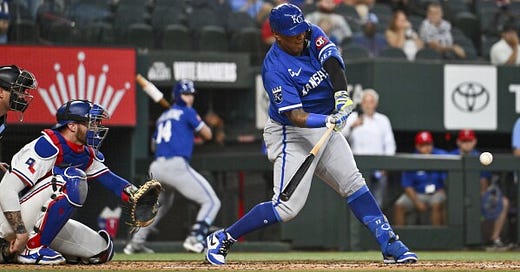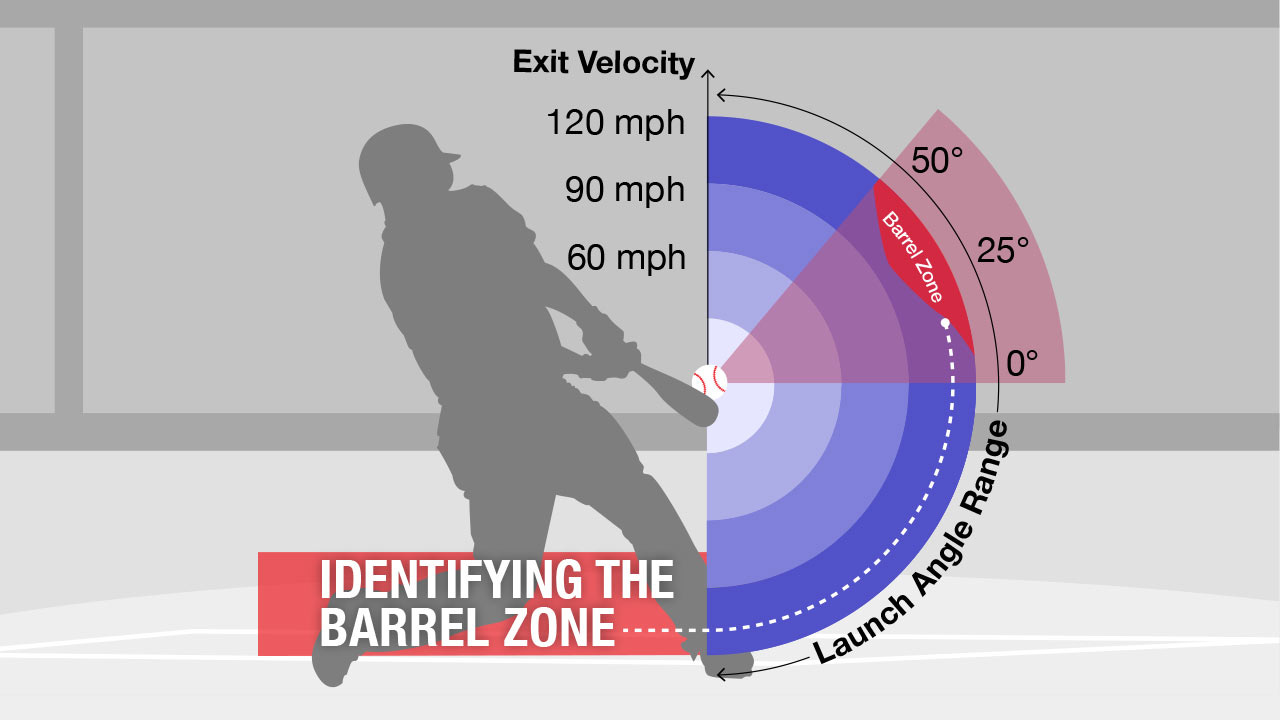Barreling the baseball is no longer just a colloquialism or baseball jargon — it’s one of the most powerful metrics we can use to assess hitters, thanks to Statcast.
A “barrel” implies a combination of both quality exit velocity and quality launch angle, pairing two key pieces of data to identify how well a ball is struck. You can smash a pitch with a 100 MPH exit velocity, but if it’s on the ground, there’s less damage to be done. You can lift a baseball to the outfield, but if it comes with a 72 MPH EV, it’s likely a weak flyout.
Barreling means you’ve achieved the best of both worlds.
Here’s the definition from Statcast:
The Barrel classification is assigned to batted-ball events whose comparable hit types (in terms of exit velocity and launch angle) have led to a minimum .500 batting average and 1.500 slugging percentage since Statcast was implemented Major League wide in 2015.
A minimum .500 batting average and 1.500 slugging percentage expectation? Seems good! In 2025, barreled baseballs are achieving a .676 batting average and 2.235 slugging percentage.
Saturday Study Hall will remain free for all, but if you’re enjoying what you’ve seen so far, consider becoming a paid subscriber (Substack’s minimum $5/month!) today. Join Mike, who recently upgraded to a paid subscription, to support the site and read independent coverage all season (and offseason) long.
But what exactly qualifies for that designation? More from Statcast:
To be Barreled, a batted ball requires an exit velocity of at least 98 mph. At that speed, balls struck with a launch angle between 26-30 degrees always garner Barreled classification. For every mph over 98, the range of launch angles expands.
A ball traveling 99 mph always earns 'Barreled' status when struck between 25-31 degrees. Add one more mph -- to reach 100 -- and the range grows another three degrees, to 24-33.
Every additional mph over 100 increases the range another two to three degrees until an exit velocity of 116 mph is reached. At that threshold, the Barreled designation is assigned to any ball with a launch angle between eight and 50 degrees.
In short, a barrel includes a minimum of 98 MPH off the bat. At that speed, a tight band of 26-30 degrees on the launch angle earns barrel designation. The harder you hit the ball, the wider the band increases.
(Not So) Royal Barrel Rates
The average barrel rate this season across the league is 7.1%. Unfortunately for Kansas City, it has just three hitters (minimum 50 batted ball events) reaching that threshold.
Salvador Perez, Bobby Witt Jr. and Jac Caglianone (in his limited sample) clear the bar by a decent margin, while Vinnie Pasquantino is behind league-average.
Maikel Garcia, with his 91.2 MPH average exit velocity and 44% hard-hit rate, certainly hits the baseball with enough authority, but as a line-drive hitter, doesn’t quite as often reach enough lift to maximize his barrels. Jonathan India is in the opposite boat, lifting the baseball with a healthy 16.8 degree average launch but subpar batted-ball metrics.
The rest of the qualified hitters… don’t come close. This roster obviously wasn’t built for slugging, nor should it be considering the home park. But if you’re looking for reasons (aren’t we all) for the offense’s struggles, keep in mind KC’s team barrel rate of 7% is fourth-worst in baseball, and there’s no surprise their .364 slugging percentage is a requisite fourth-worst.
Dodging Barrels on the Bump
OK, I admittedly didn’t plan to include this because I wanted to focus on the offense, but the above was so disgusting that we need a palate-cleanser before putting a bow on this week’s study hall.
While Kansas City’s offense struggles to barrel opposing pitching, the Royals staff itself excels at limiting them with a 7.6% team barrel rate that’s fourth-best in MLB.
Steven Cruz, in what’s been an incredibly important breakout season, has allowed a total of three barrels. Noah Cameron, Cole Ragans, Kris Bubic and Michael Wacha limit damage to great effect in the rotation. Lucas Erceg, Michael Lorenzen and Seth Lugo are all slightly better than league-average with Carlos Estevez and John Schreiber bringing up the rear among qualified pitchers, but that’s selling their efforts short — neither owns a barrel rate that you can’t live with, just a tad higher than you’d prefer.








